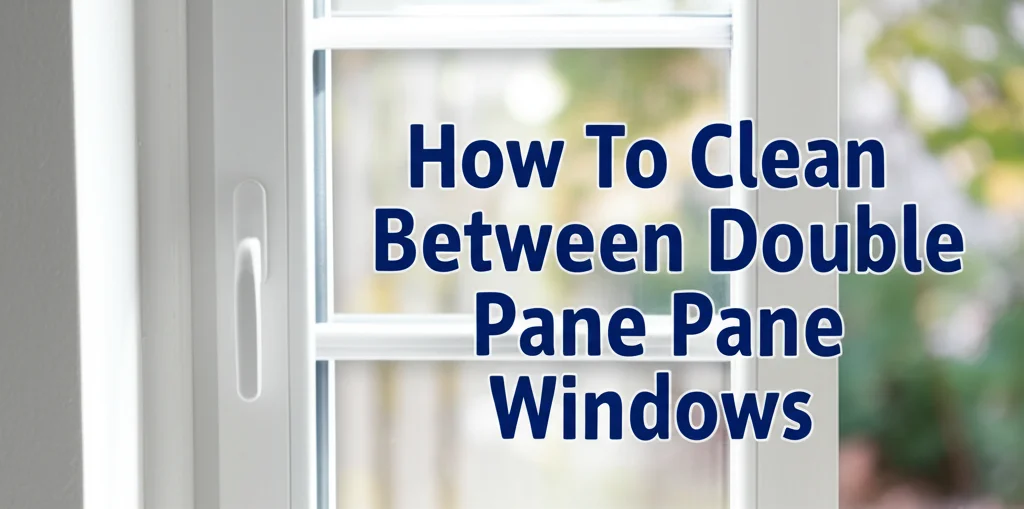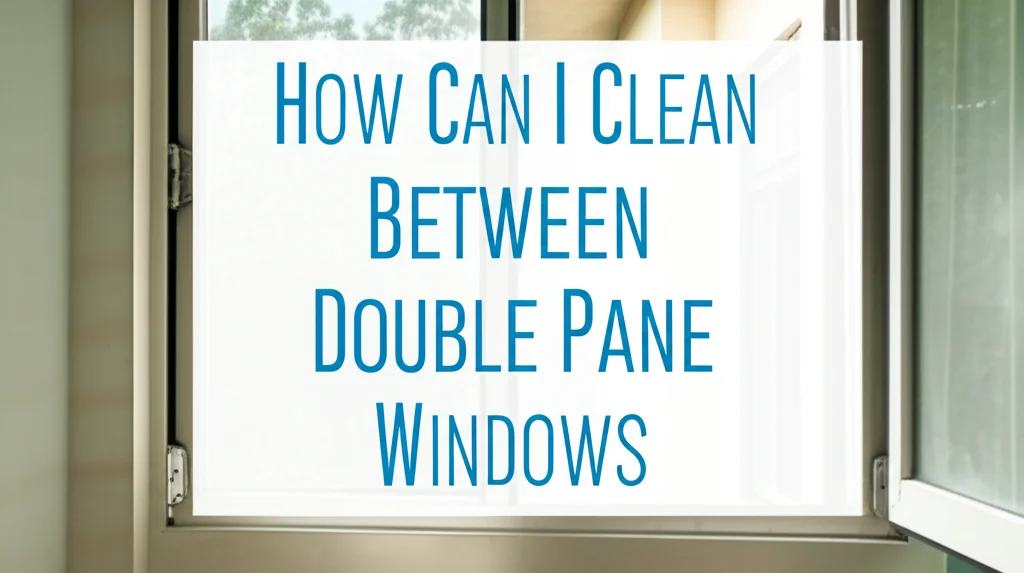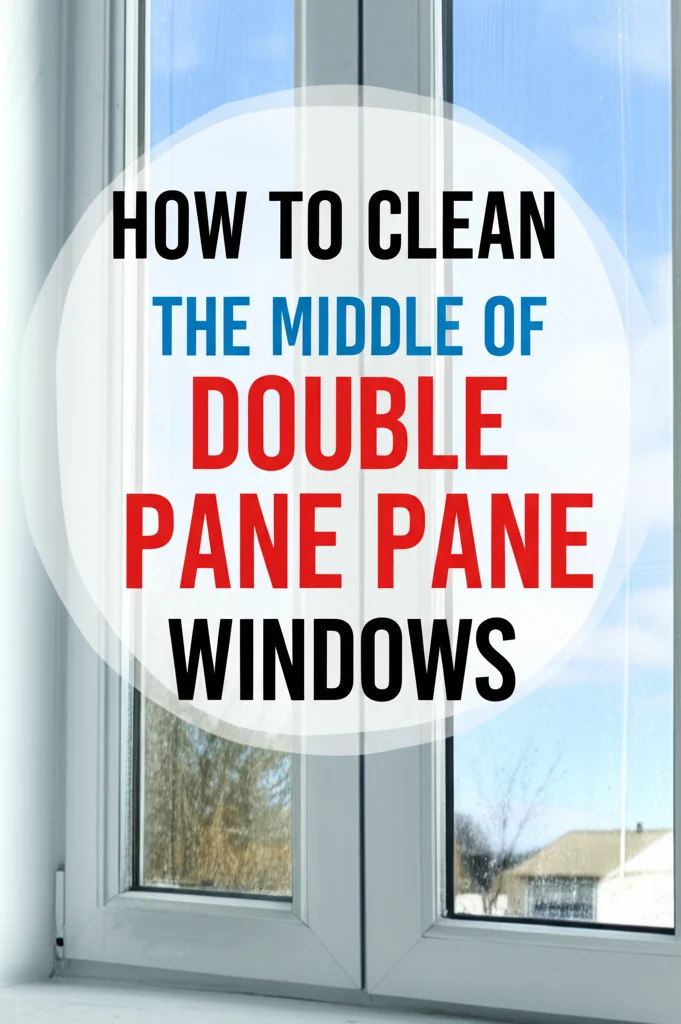· Home Cleaning · 6 min read
How To Clean In Between Double Pane Windows

Cleaning Between the Panes: A Clear View Awaits
Have you noticed a foggy buildup between the panes of your double-pane windows? It’s a common issue, and while it often seems like a major problem, cleaning between double pane windows can often be tackled with a little know-how. This article will guide you through the process, helping you understand why this happens and how to restore clarity to your windows. We’ll cover everything from identifying the cause of the grime to the best cleaning methods, and when it’s time to call a professional. Keeping your windows clean isn’t just about aesthetics; it also impacts energy efficiency and your home’s overall value.
Can you actually clean between double pane windows?
Yes, in some cases you can! If the seal hasn’t completely failed, and there’s still access, you can often clean the space between the panes. However, it’s important to understand that this is often a temporary fix, and a failed seal usually indicates a larger issue.
Why Does Grime Build Up Between Window Panes?
Before diving into cleaning, let’s understand why this happens. Double-pane windows are sealed to create an insulating barrier. This seal prevents outside air and moisture from entering. Over time, this seal can weaken or fail, allowing air and moisture to seep in. This moisture then condenses on the inner pane, trapping dust and debris.
Here’s a breakdown of the common causes:
- Seal Failure: This is the most frequent culprit. The desiccant (a drying agent) inside the window loses its effectiveness, and the seal breaks down.
- Temperature Fluctuations: Extreme temperature changes can cause the glass and frame to expand and contract, stressing the seal.
- Age: Like all things, window seals have a lifespan. Older windows are more prone to seal failure.
- Low-Quality Windows: Windows made with inferior materials or construction are more likely to develop problems.
Assessing the Situation: Is Cleaning Worth It?
Not all foggy windows are good candidates for cleaning. Before you start, assess the extent of the problem. If the condensation is minimal and the seal appears mostly intact, cleaning might help. However, if the condensation is heavy, persistent, and accompanied by visible seal damage, cleaning is likely a temporary solution. You might be better off considering window repair or replacement.
Here’s a quick checklist:
- Minor Condensation: Cleaning is likely a good option.
- Heavy Condensation: Cleaning might help temporarily, but repair or replacement is recommended.
- Visible Seal Damage: Repair or replacement is the best course of action.
- Discoloration/Mold: Indicates a significant moisture problem; professional help is needed.
The DIY Cleaning Method: A Step-by-Step Guide
If you’ve determined that cleaning is worth a try, here’s how to do it. This method involves carefully injecting cleaning solution between the panes. Proceed with caution, as improper technique can damage your windows.
What you’ll need:
- Distilled water
- Isopropyl alcohol (90% or higher)
- Dish soap (mild, non-abrasive)
- Small syringe or applicator bottle with a narrow nozzle
- Paper towels or microfiber cloths
- Drill with a small drill bit (optional, for creating a small access hole)
Steps:
- Create Access (If Needed): If there’s no existing access point, carefully drill a very small hole (1/8 inch or smaller) in the window frame, near the foggy area. Be extremely careful not to damage the glass.
- Prepare the Cleaning Solution: Mix equal parts distilled water and isopropyl alcohol with a drop of dish soap. This solution helps cut through grime and evaporates quickly.
- Inject the Solution: Using the syringe or applicator bottle, slowly inject the cleaning solution into the space between the panes. Start at the bottom and work your way up.
- Agitate and Wait: Gently tilt the window to allow the solution to spread and loosen the dirt. Let it sit for 10-15 minutes.
- Remove the Solution: Tilt the window to allow the dirty solution to drain out. Use paper towels or microfiber cloths to wipe away any remaining residue.
- Seal the Access Hole (If Created): If you drilled a hole, seal it with a waterproof sealant designed for windows.
Alternative Cleaning Solutions to Consider
While the distilled water and alcohol mix is effective, here are a few other options:
- Vinegar Solution: A mixture of equal parts white vinegar and distilled water can also help dissolve grime. However, vinegar can sometimes leave a residue, so rinse thoroughly.
- Commercial Window Cleaners: Some commercial window cleaners are designed for use on double-pane windows. Always follow the manufacturer’s instructions.
- Ammonia Solution: A very diluted ammonia solution (1 part ammonia to 10 parts water) can be effective, but use with caution as ammonia can be harsh. Ensure proper ventilation.
When to Call a Professional Window Repair Service
Sometimes, DIY cleaning isn’t enough. If you’ve tried cleaning and the condensation persists, or if you notice significant seal damage, it’s time to call a professional. A professional can properly diagnose the problem and offer the best solution.
Here are some signs you need professional help:
- Persistent Condensation: Cleaning doesn’t improve the situation.
- Broken Seal: Visible gaps or cracks in the window seal.
- Mold Growth: Indicates a serious moisture problem.
- Extensive Damage: Cracked or broken glass.
- Difficulty Accessing the Space: You’re uncomfortable drilling or injecting solution.
A professional can offer services like:
- Seal Replacement: Replacing the failed seal to restore the window’s insulating properties.
- Desiccant Replacement: Replacing the drying agent inside the window.
- Glass Replacement: Replacing damaged or cracked glass.
Preventing Future Condensation: Maintaining Your Windows
Once you’ve cleaned or repaired your windows, take steps to prevent future condensation. Regular maintenance can extend the life of your windows and keep them looking their best.
Here are some tips:
- Control Indoor Humidity: Use dehumidifiers in damp areas of your home.
- Ensure Proper Ventilation: Ventilate your home regularly to reduce moisture buildup.
- Inspect Seals Regularly: Check for cracks or gaps in the window seals.
- Clean Windows Regularly: Keep the exterior of your windows clean to allow sunlight to penetrate and help dry out any condensation.
- Consider Window Film: Applying a window film can help reduce heat transfer and condensation.
FAQ: Addressing Common Concerns
Q: Will cleaning between the panes permanently fix the problem?
A: Not necessarily. Cleaning removes the visible grime, but if the seal is failing, condensation will likely return. It’s often a temporary solution.
Q: Is it safe to drill into my windows?
A: It can be, but proceed with extreme caution. Use a small drill bit and be careful not to damage the glass. If you’re uncomfortable, call a professional.
Q: How long does a double-pane window seal typically last?
A: Typically 10-20 years, depending on the quality of the window and the climate.
Q: What’s the best way to dry the inside of the window after cleaning?
A: Tilting the window and allowing gravity to drain the solution is the most effective method. You can also use a microfiber cloth attached to a long, flexible tool to reach difficult areas.
Conclusion: Enjoying a Clear View
Cleaning between double pane windows can be a worthwhile DIY project if the problem is minor. However, it’s crucial to assess the situation carefully and understand that it might only be a temporary fix. If you’re dealing with significant seal damage or persistent condensation, calling a professional window repair service is the best course of action. By taking preventative measures and addressing issues promptly, you can enjoy clear, energy-efficient windows for years to come. Remember, maintaining your windows is an investment in your home’s comfort and value.




